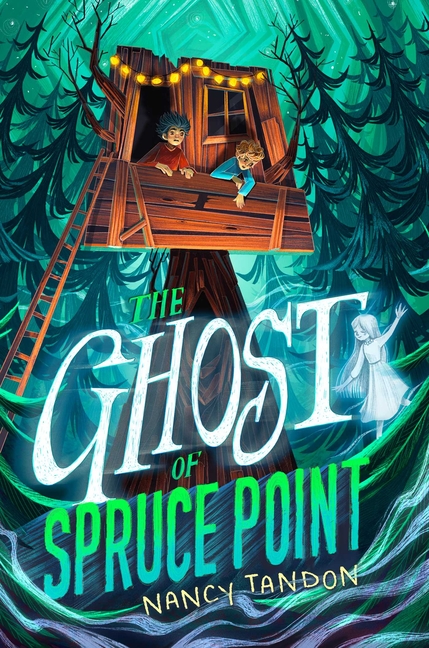From Teaching to Writing

TeachingBooks asks each author or illustrator to reflect on their journey from teaching to writing. Enjoy the following from Nancy Tandon.
The students in front of me stare back, silent. I fight the awkwardness, willing myself to stay quiet. I know important learning will occur and connections will be made. If only I can wait!
“I’ve always struggled with an important teaching tenet: wait time.”
No matter the teaching environment, from my perch on a carpet square at preschool circle time to my place at the podium of a large university lecture hall, I’ve always struggled with an important teaching tenet: wait time. Even in my personal life, I’m the kind of person who wants to fill conversational pauses with chatter and more questions, rather than letting thoughts sit for a moment.
It wasn’t until I took a teaching position at an outdoor education center that I finally made peace with the magic of waiting. Each week, a new school group would arrive. A highlight for me was leading a team of excited fifth graders to the ground’s beautiful pond and stream in search of different phases of frog development.
We would always arrive at the study site in a grand display of chaos: stomping, shouting, giggling, jostling. I would hand out nets and clipboards. I’d give a short lesson on the life span of a frog, and explain that if we were patient, and quiet, we might be able to observe everything from the eggs to a fully grown specimen right that very morning.
If we were patient and quiet.
The first day, this rarely happened. Everything around the students was too new and exciting. But as the week progressed, a calm would settle over the group. In subsequent visits, we’d softly wade into the stream and crouch down and wait. We’d observe, listen, point, and nod. The little tadpoles would wiggle by. Some would be scooped up into a clear viewing container. More silence, and we might be rewarded with a nice deep croak of a nearby bull frog. Immediate, loud reactions could break the spell, and I watched as students learned to gently redirect their peers so the full experience could play out – an adult frog caught, studied, and released.
“I was clomping loudly toward my manuscript, shouting for words to appear, willing a plot line to respond to the chaos that was my eagerness.”
Years later, sitting at my writing desk, I noticed I was doing what the first-day fifth graders had done at the nature center. I was clomping loudly toward my manuscript, shouting for words to appear, willing a plot line to respond to the chaos that was my eagerness. Of course, it is a wonderful thing to approach work with such energy and excitement. But, I also knew I was scaring away the heart of my novel, The Ghost of Spruce Point.
I needed to find an inner patience and quiet that would allow the story’s fullness to develop more naturally. For example, the book’s coastal Maine setting is so central to the story that it nearly becomes its own character. The only way I could depict it correctly would be to spend time sitting silently at the edge of the water (even if only in my memory) and gently collecting the smells, sights, textures, and sounds of the coast.
I remembered how I would encourage my students to allow space and time for things to be revealed to them. This time, it wasn’t a pollywog I was waiting for, it was a plot line. I let go of time pressures and my self-imposed need for a quickly rising word count. Quietly, I waited. And that is when the magic seeped in.
That’s not to say fingers-on-the-keyboard hard work doesn’t need to happen. Yes, the plot must eventually be captured in the net. However, as both a teacher and a writer, I have learned that wait time can sometimes be just the thing needed to pull the lesson close enough for true understanding to unfold.
Books and Resources

TeachingBooks personalizes connections to books and authors. Enjoy the following on Nancy Tandon and the books she’s created.
Listen to Nancy Tandon talking with TeachingBooks about the backstory for writing The Ghost of Spruce Point. You can click the player below or experience the recording on TeachingBooks, where you can read along as you listen, and also translate the text to another language.
- Listen to Nancy Tandon talk about her name
- Read an interview with Nancy Tandon about her books
- Discover Nancy Tandon’s page and books on TeachingBooks
- Visit Nancy Tandon on her website, Twitter, Instagram, Facebook, and GoodReads.
Explore all of the For Teachers, By Teachers blog posts.
Special thanks to Nancy Tandon and Simon & Schuster for their support of this post. All text and images are courtesy of Nancy Tandon and Simon & Schuster, and may not be used without expressed written consent.



Leave a Reply